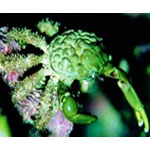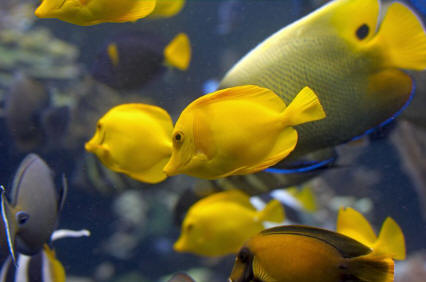Mithraculus sculptus

|
Scientific Name: Emerald Crab Price: Upon Request Origin: Caribbean Sea Family: Majidae NOT AVAILABLE NOW |
|
Other Names: Green Clinging Crab |
|
Technical Info
Temperature: 22 - 26 ℃
pH: 8.1 - 8.4
GH: 8 - 12
SG: 1.020 - 1.025
Max size: 6 cm
Min Tank size: 90 Ltr
Position in Aqua: Bottom swimmer
Description
The Emerald crab is easily recognized by it’s mottled green heavily sculpted body and large heavy claws. It has noticeable hairs visible on its hind legs and the joints of it’s legs are red in color. The claws have a blunt tip which allows the crab to grasp the algae that it typically feeds on.
Food
Emerald crabs are primarily nocturnal algae feeders and spend their nights eating various algae’s in the reef tank including hair algae, macro algae and even bubble algae which is their main claim to fame. I would not count on emerald crabs as a complete solution for any algae problems, but they can be a useful part of a balanced ecosystem. Besides algae, Emerald Crabs will also take meaty foods that they scavenge or are target fed. If the tank is not a well established tank with plenty of live rock for them to forage on, their diet may need to be supplemented with some dried seaweed or meaty foods such as Mysis shrimp or good quality pellet food to keep them healthy and avoid having them pick at things they shouldn’t be picking at.
Breeding
Captive breeding success is unreported.
Compatible with
The Emerald crab is a good scavenger for reef tanks. They are primarily herbivores, but like most crabs Emeralds have the ability to eat things they shouldn’t, and are occasionally accused of picking at corals if their normal food supply runs out. They are primarily nocturnal and usually spend the day hidden in a crevice, coming out at night to feed, though they seem to get bolder and come out more during the day as they become more accustomed to the tank. If their nutritional requirements are met, they are suitable inhabitants for small tanks. Generally get along well with other tank inhabitants. They are slow methodical feeders and don’t steal food from corals. unless they happen to be close to the coral that is being feed and hungry. In general, the larger the crab, the more likely they are to become a problem in the tank. As with any crab in a reef tank (except for acropora crabs), an eye should be kept on them to make sure that they are behaving themselves.
Note
Like other invertebrates, the Emerald Crab does not tolerate copper-based medications or fluctuating water parameters.

